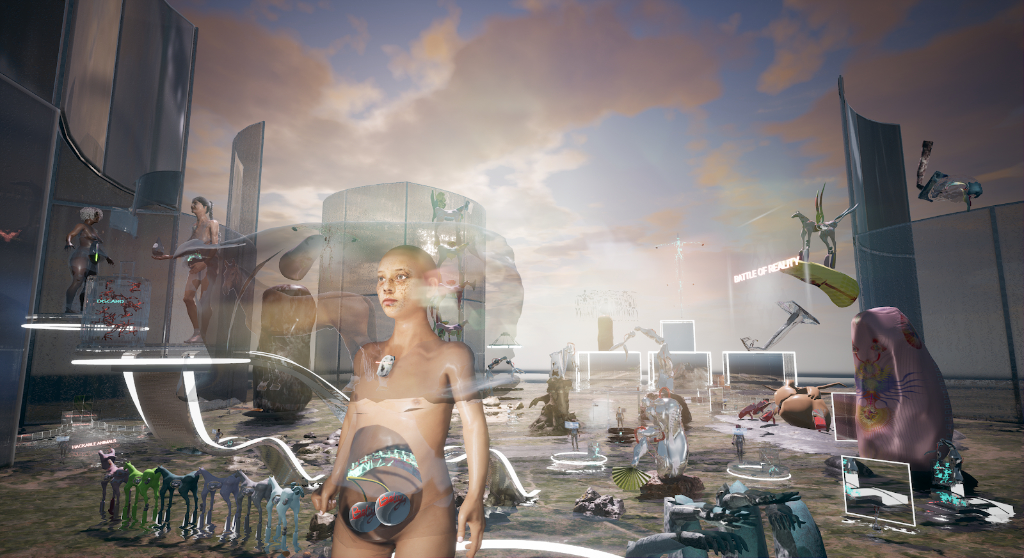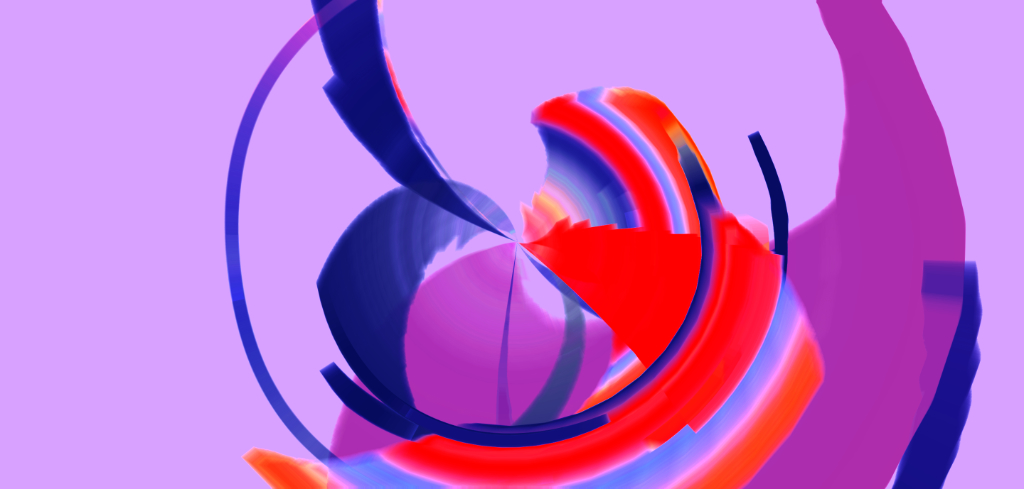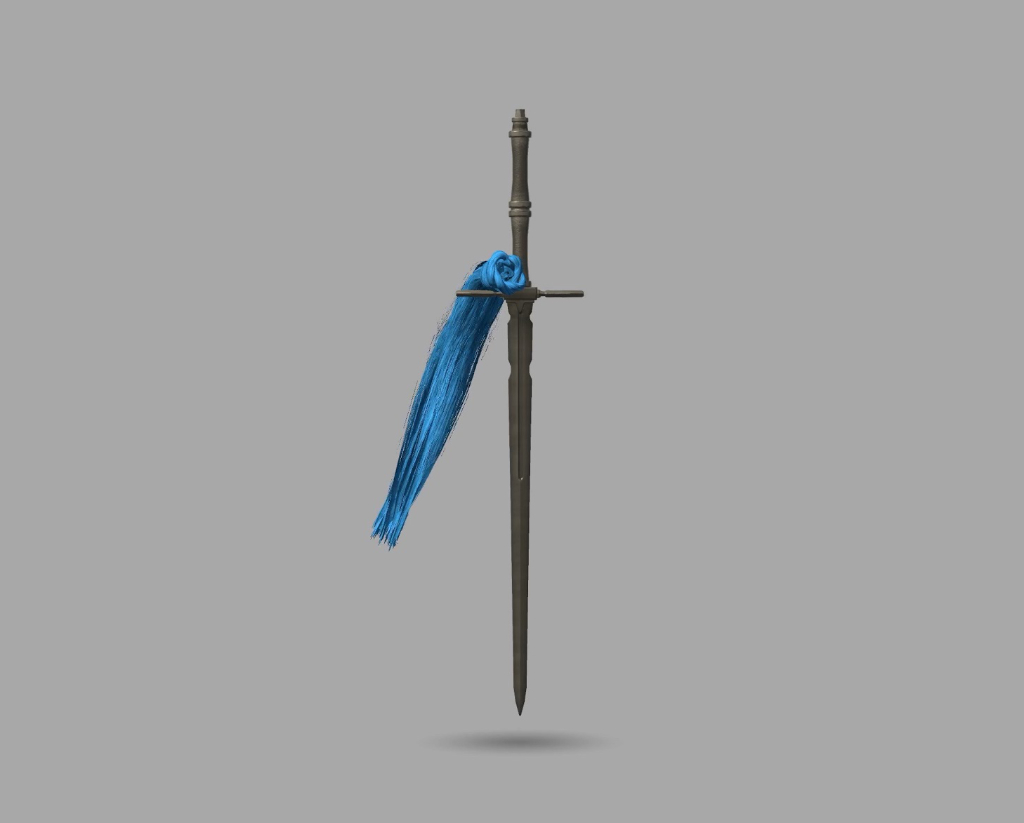Text by Charlotte Kent

Auction houses certainly provide a service to the art industry, but their secondary market foundation makes them perhaps not the ideal place to cultivate emerging art. Galleries provide context for such works, especially involving unusual media or new technologies.
As auction houses dominate the conversation about blockchain art with their haphazard sales, the media frenzy remains focused on market value. Many people leap to blockchain platforms to scour them for art, drowning in grids of works that should, by no aesthetic standard, be positioned next to one another.
This dual force undermines the conversation around blockchain art and digital art more broadly, which is a shame since several digital art galleries––ones that have managed digital art, know how to present it, explain it, and judge it––have eloquent blockchain art exhibits that represent the real potential of this technology for interested artists.
To be clear, Furtherfield, Kate Vass Galerie, left gallery, and others have produced exhibits with works relating to blockchain and sold as NFTs since as far back as 2014. Some galleries have been accepting sales in crypto-currency this whole time, too. And yet, for some benighted reason, flashy jpg seem to dominate the discourse.
So, if you are interested in blockchain and want to see some splendid artists exhibiting works that speak to the technology in gallery-curated web-based spaces that service the works themselves, here are some newly established, blockchain-specific exhibition platforms.
The acclaimed software artist Casey Reas launched Feral File in mid-March as a blockchain platform for artists by artists. The first exhibit, Social Codes, presents an intentional series of works focused on code as art. Since so much is made of blockchain cryptography, it seems all too appropriate for this launch.
They are all generative, responding to everything from a Keats’ poem to the artist’s body to the potential within a custom software. Some are interactive, and others are not, but they are all by exemplary artists. The ten artists each produced a single work for this show, offered as 75 limited editions. Reas capped the prices to be affordable, a way to cultivate emerging digital art collectors. All sold out within 24 hours.
The next Feral File exhibit opens on May 20th, curated by Julie Walsh, and another on June 28th, with more planned through the end of the year. A curator for each provides a theme, and a vision to ensure that the works are enhanced by their relationship with each other. Though the presentation format is a grid, the curatorial oversight coheres to the works. This is something sorely missing in visiting the various blockchain art platforms, and it is delightful to rediscover the grid format as a thing of simplicity and beauty.
Inherent to the platform is a communitarian ethos. Within each group exhibit, the artists gift the other artists with one of their works, thereby creating a society of art collectors. Reas has long been an advocate for open source and shared exchange, and while much of the blockchain world espouses these values, Feral File is unique in integrating them into the platform.
Transfer gallery and left gallery collaborated to launch Pieces of Me, a wide-ranging exhibit of 50 works that respond to the aggregate hype of the emerging global NFT marketplace. Digital art and blockchain shows, in particular, often propose infinity as their end date, and though the works remain displayed, subsequent shows shift the focus.
This exhibit will continue through the end of July, with the works mimicking the ‘drop’ practice across that period and assorted talks to illuminate the show’s conceit. Not all works can be minted, and some are unavailable for sale because the exhibit is overall about how blockchain skews thinking about art, digital art markets, collecting/stewardship, and value more broadly.


Wade Wallerstein curated the works, using phrases from Octavia Butler’s Parable of the Sower to create eight conceptual sets. The first ‘room’, This is Who I Am, invokes the notion of self-portraiture as it has been influenced by technology, particularly since blockchain’s non-fungible token aspirations are to designate indelible identity. The production of avatars, self-branding and celebrity culture, digital self-representations like websites, software limitations, and the impossible to discern the difference between on/off-line life appear across all these works and force questions around blockchain.
Each set provides a conceptual framework, but works are also listed alphabetically so viewers can view them indiscriminately. The page for each work provides a helpful description of the work’s purpose, a bio that illuminates the artist’s practice and interest in blockchain, and the specifications of the sale package since each work has its own sale framework.
This is not a plug-and-play formula platform; Kelani Nichole and Harm van den Dorpel developed it to ensure that the freedom of expression inherent in each work is matched by the artist’s freedom to design their own fiscal expectations for its sale.
Though the works are always available for viewing, the gallery is open for visitors on Saturday through VideoLounges, an incredibly user-friendly platform that enables groups to video chat privately, move from one group to the next, and participate in a scrolling public conversation. This is important because blockchain itself needs so much explanation, and the works are conceptually dense and deserving of dialogue.
Steve Sachs of bitforms launched bit.art on April 16th with 3D sculptures of Auriea Harvey’s work, a companion piece to her outstanding exhibit in the gallery’s physical space (Year Zero, March 6-April 24, 2021). bit.art presents the artist’s NFT work with deeper context, collaborating with each artist for the online presentation.
Plans are to offer solo and group offerings, sometimes as an extension of a gallery exhibit. This will help illuminate facets of digital practices that have sometimes been obscured when presented in physical galleries. As a renowned gallery in digital art, bitforms is well-positioned to help cultivate collector confidence in a technology that is disserved by all the media hype and speculations.
The site is designed for artists and collectors to engage with NFTs outside of the auction, resale and non-custodial situations that are rampant right now. The various minting platforms present environmental and technological concerns. Still, working with HicEtNunc.xyz has enabled a fluid interface where buyers remain on the gallery site, a common complaint among collectors.
It is also an open-source platform used by many leading artist-technologists who are contributing their knowledge base to support artists’ needs. All of them are committed to developing more energy-efficient practices for blockchain as this is the only way to carve out an ethical blockchain, distinct from the indifference of other industries. (Finance has been in this space for ten years but never made the effort to alter the ecological impact of mining.)
bit.art doesn’t have a set drop schedule and clarifies that it may not use that language. The blockchain space is still evolving, and these galleries and others committed to digital art are where we should be looking for a better understanding of how this technology might inform or even shape the art industry. There are numerous galleries presenting works with an associated blockchain token. Still, these three gallery spaces are worth noting for their intentionality around the particular features of blockchain’s intersection with art.
These galleries offer engagement models for galleries working in tangible objects that are looking into the blockchain marketplace. For artists, they represent an appropriate stewardship of work engaging a complicated technology. They declare that display and context matter for NFTs, too. For Art audiences, they do the desperately needed work of making blockchain art legible.






